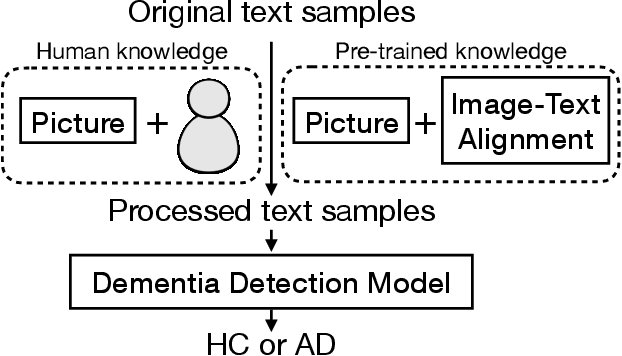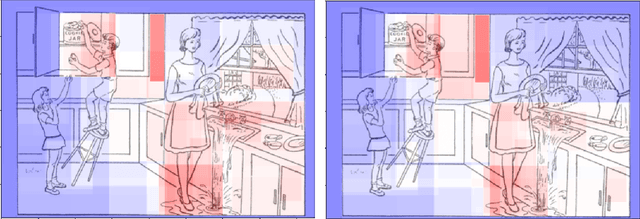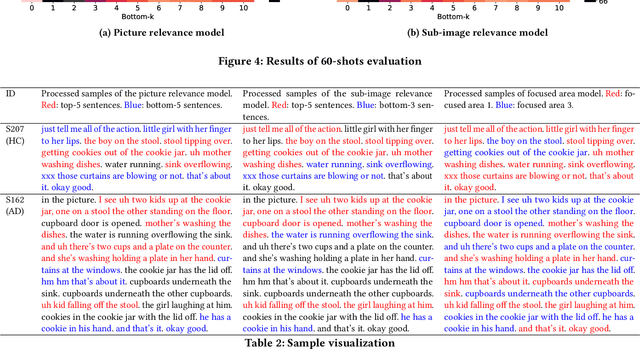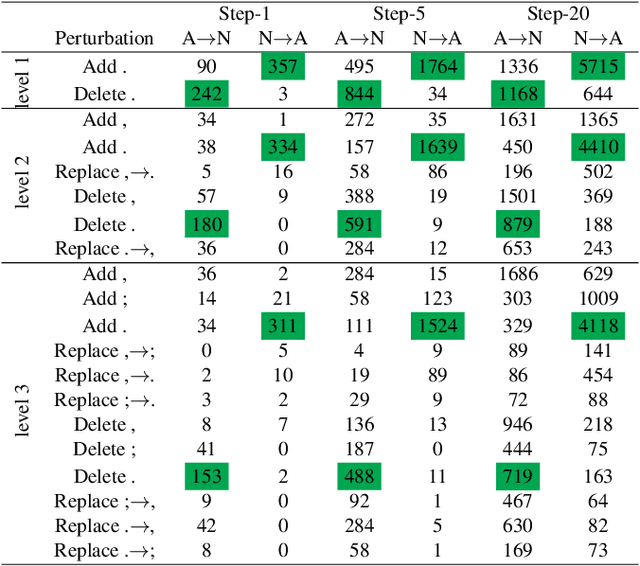Robert M. Roth
Evaluating Picture Description Speech for Dementia Detection using Image-text Alignment
Aug 11, 2023



Abstract:Using picture description speech for dementia detection has been studied for 30 years. Despite the long history, previous models focus on identifying the differences in speech patterns between healthy subjects and patients with dementia but do not utilize the picture information directly. In this paper, we propose the first dementia detection models that take both the picture and the description texts as inputs and incorporate knowledge from large pre-trained image-text alignment models. We observe the difference between dementia and healthy samples in terms of the text's relevance to the picture and the focused area of the picture. We thus consider such a difference could be used to enhance dementia detection accuracy. Specifically, we use the text's relevance to the picture to rank and filter the sentences of the samples. We also identified focused areas of the picture as topics and categorized the sentences according to the focused areas. We propose three advanced models that pre-processed the samples based on their relevance to the picture, sub-image, and focused areas. The evaluation results show that our advanced models, with knowledge of the picture and large image-text alignment models, achieve state-of-the-art performance with the best detection accuracy at 83.44%, which is higher than the text-only baseline model at 79.91%. Lastly, we visualize the sample and picture results to explain the advantages of our models.
Towards Interpretability of Speech Pause in Dementia Detection using Adversarial Learning
Nov 14, 2021



Abstract:Speech pause is an effective biomarker in dementia detection. Recent deep learning models have exploited speech pauses to achieve highly accurate dementia detection, but have not exploited the interpretability of speech pauses, i.e., what and how positions and lengths of speech pauses affect the result of dementia detection. In this paper, we will study the positions and lengths of dementia-sensitive pauses using adversarial learning approaches. Specifically, we first utilize an adversarial attack approach by adding the perturbation to the speech pauses of the testing samples, aiming to reduce the confidence levels of the detection model. Then, we apply an adversarial training approach to evaluate the impact of the perturbation in training samples on the detection model. We examine the interpretability from the perspectives of model accuracy, pause context, and pause length. We found that some pauses are more sensitive to dementia than other pauses from the model's perspective, e.g., speech pauses near to the verb "is". Increasing lengths of sensitive pauses or adding sensitive pauses leads the model inference to Alzheimer's Disease, while decreasing the lengths of sensitive pauses or deleting sensitive pauses leads to non-AD.
 Add to Chrome
Add to Chrome Add to Firefox
Add to Firefox Add to Edge
Add to Edge